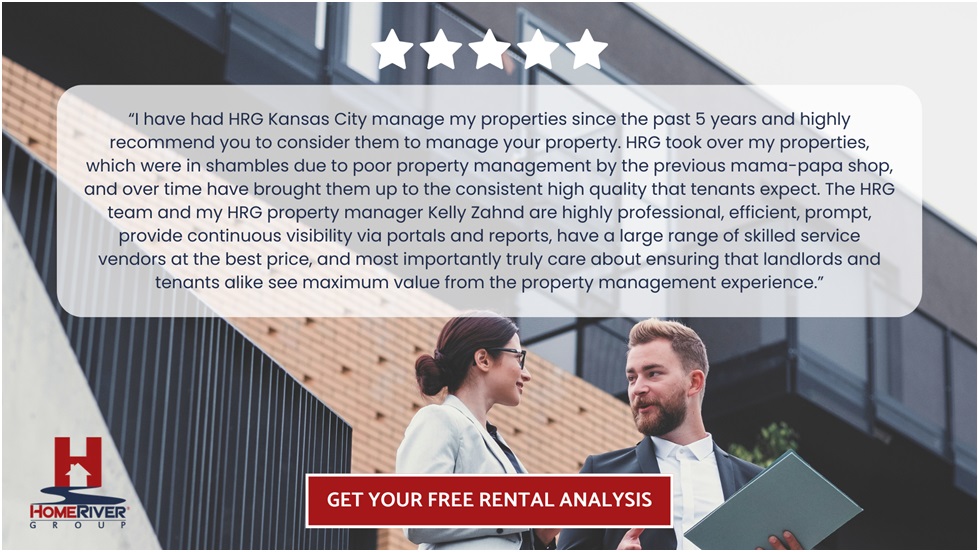
Key Takeaways
- Comprehensive Market Analysis: Understanding the Phoenix rental market is essential to setting a competitive price and maximizing your return on investment.
- Amenities & Upgrades Matter: Features like location, amenities, and upgrades can significantly boost your rental property's value and help justify higher rental rates.
- Strategic Seasonal Pricing: Adapting your pricing strategy to Phoenix’s seasonal demand fluctuations can reduce vacancy periods and optimize your income year-round.
Phoenix Rental Pricing Strategies: Set The Right Rate For Your Property
At HomeRiver Group, we understand the challenges and intricacies of setting the right rental price. With our exceptional service, local expertise, and comprehensive property management services, we are committed to helping property owners easily navigate the Phoenix rental market.
In Phoenix's vibrant and ever-evolving real estate market, setting the right rental price for your property is both an art and a science. With the city's population growth, thriving economy, and increasing demand for rental properties, landlords and investors have a unique opportunity to capitalize on their investments. However, navigating the complexity of rental pricing requires a strategic approach to ensure your property remains competitive while maximizing your returns. Understanding how to price your rental in Phoenix is crucial in attracting and retaining tenants, ensuring steady cash flow, and enhancing the overall value of your investment.
This article will explore the key factors influencing rental pricing in Phoenix, including market trends, property evaluations, seasonal influences, and how to set a competitive rental price to maximize your investment.
Components Of Competitive Rental Pricing
When determining how to price your rental in Phoenix, several key factors must be considered to set a competitive and appealing rate for potential renters and buyers. Setting the right price for your property is about understanding the value your property offers in the local market and optimizing your return on investment.
Here are the main components that HomeRiver Group considers when setting rental prices, offering you exceptional service with local expertise:
Market Analysis
A comprehensive study of the current rental market in Phoenix is crucial. This involves examining similar properties in the area—considering the number of bedrooms, bathrooms, location, and amenities—to establish a baseline price. HomeRiver Group leverages its dedicated local market expertise and extensive database to gauge market conditions accurately.
Property Evaluation
Every property is unique, with its own set of features and benefits. We assess the condition of your property, its upgrades, and any potential limitations. This evaluation helps position your property competitively in the market, ensuring that the pricing reflects the property's intrinsic and enhanced values.
Demand Fluctuations
Like any other rental market, Phoenix experiences seasonal and economic fluctuations that can affect demand. Understanding these trends is key to pricing your rental appropriately. By analyzing market cycles, HomeRiver Group decides the best time to list your property to maximize profitability.
Cost Considerations
Beyond the market rate, it’s essential to factor in your costs. This includes mortgage payments, property taxes, maintenance, and association fees. The rent price needs to cover these expenses while providing a reasonable return on investment. Our asset management and reporting capabilities ensure a clear understanding of your property’s financial performance.
Legal And Regulatory Compliance
Staying informed about local rental laws and regulations is essential. This includes understanding rent control ordinances, if applicable, and ensuring that your pricing strategy adheres to all local, state, and federal laws. HomeRiver Group's centralized operations include a thorough compliance check to mitigate legal risks.
Comparative Pricing Strategy
Regularly monitoring the prices of similar rentals in the Phoenix area can offer insights into market shifts and consumer behavior. A flexible pricing strategy, perhaps adjusting for peak and low seasons, can help keep your property competitively priced year-round.
Factoring In Amenities And Upgrades
Considering the amenities and upgrades is crucial when devising a rental pricing strategy for your Phoenix property. These features enhance the appeal of your property and can significantly impact its rental value.
Assessing Amenities
Amenities are critical drivers of rental prices. In Phoenix, where the market is competitive, properties that offer more than just the basics tend to attract more interest and command higher rents. Here's how to factor them into your pricing strategy:
- On-site Amenities: Properties with on-site features like a pool, gym, or community center can justify higher rental rates. Evaluate how these compare with local offerings and price accordingly.
- Location-Based Benefits: The proximity to public transportation, parks, schools, and shopping areas is a substantial value-add. Rentals in prime locations with easy access to these conveniences should see an uptick in pricing reflective of their desirability.
- Security Features: Enhanced security measures, such as gated access, security cameras, and patrol services, are increasingly important to renters and can allow for a premium on your rental rate.
Upgrading For Value
Upgrades to your property can also bolster its rental price. High-quality finishes, energy-efficient appliances, and modern renovations attract renters and can set your property apart. Consider the following when upgrading:
- Cost vs. Benefit Analysis: Before implementing any upgrades, analyze their potential ROI. Not all improvements will yield a higher rent or attract renters more quickly, so prioritize those with the highest potential impact.
- Market Trends: Stay aware of what's trending in the Phoenix rental market. Upgrades that match or exceed current market expectations are more likely to enhance your property's appeal and justify a higher rental rate.
- Target Demographic: Tailor your upgrades to appeal to your target renters. Families might value additional safety features and spacious layouts, while professionals might look for smart home features and high-speed internet capabilities.
Evaluating Neighborhood Demand And Supply
When considering how to price your rental in Phoenix, a critical step involves comprehensively evaluating the demand and supply within the specific neighborhood where your property is located. This assessment is pivotal for setting a rental rate that attracts tenants and ensures your investment yields optimal returns.
The dynamics of Phoenix's neighborhoods can vary significantly, with factors such as local amenities, crime rates, proximity to schools, and public transportation playing a crucial role in influencing rental prices. To precisely gauge neighborhood demand, HomeRiver Group recommends analyzing the local occupancy rates and how long properties stay on the market before being rented. High occupancy rates coupled with short market durations typically signal a strong demand, suggesting that you might have more flexibility to set a higher rental price.
Conversely, understanding supply involves examining the number of available rental units in your area and their pricing. If the neighborhood is saturated with vacant properties, or if there is a surge of new developments, this could lead to increased competition, necessitating more competitive pricing strategies to ensure your property stands out.
Consider the seasonal trends in Phoenix's rental market to refine your pricing strategy further. Demand might spike during certain times of the year, allowing for premium pricing, while other periods require adjusting rates to remain competitive.
Seasonal Influences On Rental Rates
Grasping the impact of seasonal trends is crucial for anyone wondering how to price their rental in Phoenix. Fluctuating demand throughout the year can significantly affect the optimal rental price for your property. HomeRiver Group understands these patterns and leverages them to maximize your returns while ensuring your property remains competitive.
High Demand Seasons
The Phoenix rental market peaks from late winter through early summer. This period sees an uptick in demand, primarily driven by factors such as the end of the school year and the desire for many to settle into a new home before the next academic year begins. During these months, you can often afford to set your rental rates slightly higher due to increased competition among renters for desirable properties.
Low Demand Seasons
Conversely, late summer through fall represents the slower season for Phoenix rentals. The intense heat can deter individuals from moving, leading to a decrease in rental demand. This is when property owners consider adjusting prices to attract tenants more effectively. Offering incentives or slightly lowering the rental rate could reduce vacancy periods, maintaining a steady income flow even during slower months.
Strategic Pricing Adjustments
At HomeRiver Group, we analyze these trends and suggest pricing strategies that align with seasonal demand shifts. Adjusting your rental rates according to these cycles allows you to avoid long vacancies and attract tenants more efficiently. Strategic pricing, tailored to the nuances of Phoenix's rental market seasons, ensures your investment remains lucrative year-round.
Calculating Costs: ROI On Your Phoenix Property
As an investor in the Phoenix rental market, understanding how to calculate your property's Return on Investment (ROI) is paramount. This calculation will inform your rental pricing strategy, ensuring it aligns with your investment goals while maintaining a competitive edge in the bustling Phoenix market.
Step 1: Calculate Gross Annual Income
Start by determining the potential annual income your property could generate. This involves setting a competitive monthly rental price based on in-depth market research, including location, property size, amenities, and the current state of the Phoenix rental market.
Step 2: Deduct Operating Expenses
Once the potential rental income is established, subtract the operating expenses required to maintain the property. If applicable, operating expenses include property management fees, maintenance costs, property taxes, insurance, and homeowners association (HOA) fees. It’s essential to factor in vacancy rates and potential repairs.
Step 3: Calculate Net Operating Income (NOI)
With your gross income and operating expenses outlined, determining the Net Operating Income (NOI) of your Phoenix rental is straightforward. NOI is simply the gross rental income minus the operating expenses. This figure is crucial in understanding your property's operational efficiency and serves as a base for calculating ROI.
Step 4: Determine Return On Investment (ROI)
To finalize the ROI calculation, divide the NOI by the total property cost (purchase price plus any renovation expenses). Multiplying this number by 100 will give you the ROI percentage. A higher ROI signifies a more profitable investment. HomeRiver Group’s unified national platform and local expertise in the Phoenix market provide the tools and insights to maximize rental property ROI.
Final Thoughts
Determining how to price your rental in Phoenix is a process that requires a deep understanding of both the local market and your property’s unique value. With HomeRiver Group’s unparalleled combination of national reach and local market expertise, we offer a solid foundation to ensure your pricing strategy is both competitive and profitable.
As the premier national property management company, HomeRiver Group places your property as our top priority. Leveraging our comprehensive suite of management and related services, we take the guesswork out of pricing your rental. Our experts are equipped with the latest market data and trends, ensuring your rental property exceeds market expectations.
Let us guide you in setting the right rate for your property, maximizing your investment while ensuring your rental remains highly sought after in the bustling Phoenix market. Your property’s potential is limitless with HomeRiver Group by your side.
Read also:
- A Guide To Investing In Phoenix Real Estate
- Top Maintenance Tasks For Phoenix Rental Properties
- How Much Does Rent In Phoenix Cost?
Frequently Asked Questions About How To Price Your Rental In Phoenix
What factors influence rental pricing in Phoenix?
Location, property size, amenities, market trends, and demand all impact Phoenix rental prices. Proximity to schools, shopping, and job centers, along with property conditions and features (like pools or upgrades), also play a role.
Is it better to price my rental higher to leave room for negotiation?
Overpricing can deter renters and prolong vacancy. It's better to price competitively based on market conditions and comparable listings for quicker agreements without much negotiation.
How do I determine the right rental price for my Phoenix property?
Research similar properties in the area using online platforms or real estate websites. Consider location, size, and features. Consulting property management companies like HomeRiver Group can provide valuable insights.
How often should I review and adjust my Phoenix rental price?
Review rental prices annually or when your property is available. Stay aware of market trends, economic changes, and local demand to keep your pricing competitive.
What are some common pricing strategies for rental properties?
Common strategies include competitive pricing (based on similar properties), value-added pricing (justifying higher rent with extras), and premium pricing (for luxury amenities). Choose based on your property type and target market.
How can I find out what similar properties are charging for rent?
Check online rental listings and real estate websites. Property management companies like HomeRiver Group can offer market analysis. Networking with other landlords or attending real estate events also helps.










